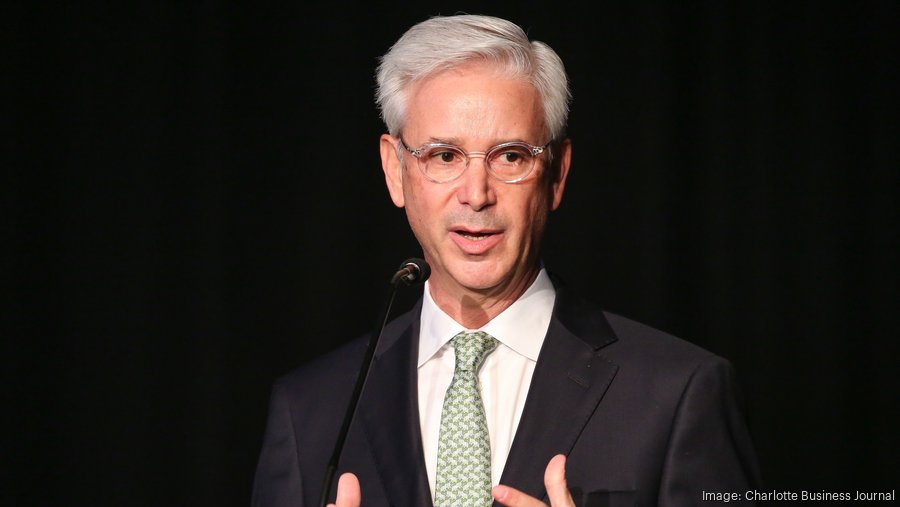Listen to this article 2 min
Bank CEOs often take advantage of quarterly earnings calls to tout how much they’re doing for customers, whether it be more lending, taking more deposits or providing more services.
Then there’s Wells Fargo. CEO Charlie Scharf discussed on Friday’s earnings call how the bank is sending attractive lending opportunities to rivals and sometimes getting a bit aggressive in asking business customers to take their deposits elsewhere.
Wells Fargo’s unorthodox customer tactics reflect the bank's asset cap that by design limits the bank’s growth. Among a bank’s biggest assets are the loans it makes.
The asset cap of $1.95 trillion, a punitive measure placed on the bank in 2018 following a series of scandals, requires the bank to restrict its growth. The bank also continues to operate under several regulatory consent orders as well.
“Wells Fargo is near its asset cap limit, which will hamper its ability to grow loans,” Edward Jones analyst Kyle Sanders told clients Friday. He doesn’t expect the asset cap will be lifted in 2024.
In recent years, Scharf has taken advantage of the bank’s earnings calls to rein in analysts’ expectations on when the company may resolve issues tied to the asset cap and other punitive measures.
But on Friday, Scharf discussed the asset cap’s impact on the bank’s operations in response to an analyst’s question.
“Probably the most important thing with the asset cap, quite frankly, is not the pure economics at this point. That will come from the lifting of the asset cap.
“It is still a reputational overhang for us,” Scharf said, adding that the asset cap’s removal will be “an important factor in terms of how we’ll be viewed as opposed to what we’ll actually do.”
The asset cap also affects how those working inside the bank go about their jobs.
“When we look at what we have done to proactively manage the company to keep ourselves below the asset cap, you’ve got two categories: You’ve got places where we have gone and said, ‘Please make your business smaller’ just because of normal deposit flows and consumer business and things like that. We’ll have some asset pressure, and we need to offset that someplace.
“And then there’s the opportunity cost of what we haven’t been able to do, because we’ve had the asset cap,” Scharf said, pointing to limits on the bank’s ability, especially in its trading businesses, to provide low-risk financing for customers.
“We have not captured as much trading flow as we otherwise would have seen,” Scharf said. “In our corporate businesses, we’ve been very, very careful to encourage our bankers to bring in sizable corporate deposits that weren’t clearly operational deposits.
“And in some cases, (we’ve) been a little bit more aggressive about asking them actually not to have (the deposits) here, because we wanted to make room for other things that we thought were really important strategically, such as not being closed for business on the consumer side, which those folks would not understand is hopefully just something that’s temporary.
“So those are the places that, in the short term, would benefit from the asset cap being lifted,” Scharf said. “Across all of our businesses, we’ve been very, very conservative in what we have asked people to do, because we don’t want to have an asset cap issue.
“We’re just limited in our ability to take advantage of the franchise that we have.”
Given Wells Fargo’s growth potential without an asset cap, its eventual removal is often top of mind with investors.
“Regulatory headwinds still linger. Wells Fargo is behind schedule in addressing several regulatory issues,” Sanders at Edward Jones said.
Sanders considers Wells Fargo to be a “long-term turnaround story” under the leadership of Scharf who joined the bank as CEO in October 2019.
“We are confident the new management team will address these issues,” Sanders said. “Once this is achieved, we see a significant opportunity to improve profitability through reduced compliance spending and efficiencies from technology investments that leverage Wells Fargo’s large, powerful position in banking.”
Bay Area deposits as of June 30, 2023
| Rank | Prior Rank | Bank/Prior rank |
|---|---|---|
1 | 1 | Bank of America |
2 | 2 | JPMorgan Chase & Co. |
3 | 3 | Wells Fargo & Co. |





